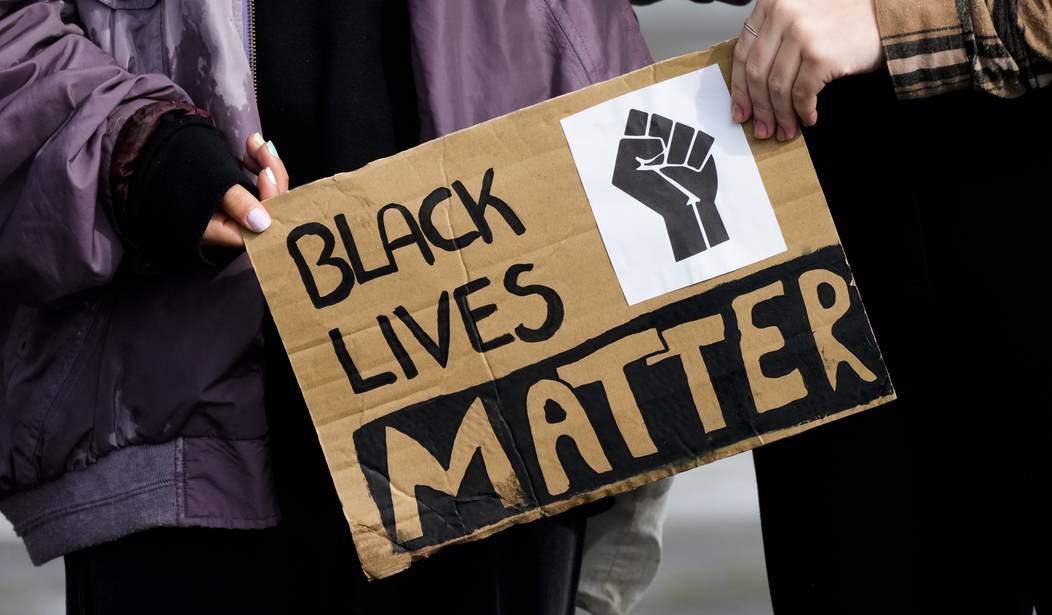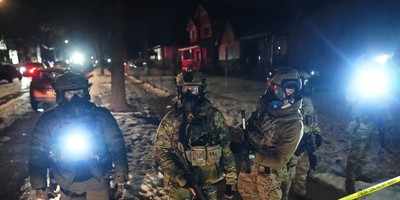There must be an investigation. How many purchases have been made on these real estate buys by Black Lives Matter’s upper crust? Millions of dollars have been blown on things that are not in relation to furthering their agenda. I’m not so sure that the rank-and-file of this movement are pleased that its leaders are buying personal homes with donation money. First, and most obvious, there’s the legal issue with all these expenditures, some of which were just recently disclosed. I’m talking about the $6 million mansion that BLM purchased in 2020. It’s in southern California. It was supposedly going to be disclosed so why the wait?
New York Magazine’s Sean Campbell had a lengthy piece about the recent disclosure of the mansion. Some of the leaders of the movement tried to defend it by saying people “don’t know shit” about working in such a small space. I believe “box” was used to describe the 6,500 square-foot property in Southern California which was described as an influencer-safehouse-secret bunker which makes no sense. Why would a house be used as a safehouse and a media content factory?
Campbell also noted why you might not have heard about this story. First, Facebook has flagged it as “abusive; you can’t share it. Second, through group chats apparently BLM is using a private investigator to go after journalists who report on the movement’s shady real estate buys and their detractors in general (via NY Mag) [emphasis mine]:
On a sunny day late last spring, three leaders of the Black Lives Matter movement — Patrisse Cullors, Alicia Garza, and Melina Abdullah — sat around a table on the patio of an expensive house in Southern California. The women were recording a YouTube video to mark the first anniversary of George Floyd’s murder, and they discussed their racial-justice work and the difficulties they had faced over the year.
“For me, the hardest moments have been the right-wing-media machine just leveraging literally all its weight against me, against our movement, against BLM the organization,” Cullors said. “I’m some weeks out now from a lot of the noise, so I have more perspective, right? While I was in it, I was in survival mode.” She was referring to an April 2021 article in the New York Post that revealed her purchase of four homes for nearly $3 million. The disclosures had contributed to the idea that there is a disturbing gap between the fortunes of the movement’s most visible figures and on-the-ground activists across the country, and Cullors resigned as executive director of Black Lives Matter Global Network Foundation on May 27, within a few days of the patio chat.
[…]
None of the women acknowledged the house behind them. It’s far from a box, with more than 6,500 square feet, more than half a dozen bedrooms and bathrooms, several fireplaces, a soundstage, a pool and bungalow, and parking for more than 20 cars, according to real-estate listings. The California property was purchased for nearly $6 million in cash in October 2020 with money that had been donated to BLMGNF.
[…]
On March 30, I asked the organization questions about the house, which is known internally as “Campus.” Afterward, leaders circulated an internal strategy memo with possible responses, ranging from “Can we kill the story?” to “Our angle — needs to be to deflate ownership of the property.” The memo includes bullet points explaining that “Campus is part of cultural arm of the org — potentially as an ‘influencer house,’ where abolition+ based content is produced by artists & creatives.” Another bullet is headed “Accounting/990 modifications” and reads in part: “need to first make sure it’s legally okay to use as we plan to use it.” The memo also describes the property as a “safehouse” for leaders whose safety has been threatened. The two notions — that the house is simultaneously a confidential refuge and a place for broadcasting to the widest possible audience — are somewhat in tension. The memo notes: “Holes in security story: Use in public YT videos.”
In an emailed statement on April 1, Shalomyah Bowers, a BLMGNF board member, said that the organization bought Campus “with the intention for it to serve as housing and studio space for recipients of the Black Joy Creators Fellowship.” The fellowship, which “provides recording resources and dedicated space for Black creatives to launch content online and in real life focused on abolition, healing justice, urban agriculture and food justice, pop culture, activism, and politics…”
[…]
Even if everything about the house is above board, the general air of secrecy is out of step with the transparency that is expected of charitable or tax-exempt organizations. The size of the acquisition could expose the group to criticism. “That’s a very legitimate critique,” says Jacob Harold, a former CEO of GuideStar and the co-founder of Candid, an information service that reports on nonprofits. “It’s not a critique that says what you’re doing is illegal or even unethical; it might just be unstrategic. Why aren’t you spending it on policy or, you know, other strategies that an organization might take to address the core issues around Black Lives Matter?”
[…]
Other conversations on the BLM Security Hub chat show efforts to monitor social media for negative mentions of BLMGNF, with members using their influence with the platforms to have such remarks removed. It’s currently not possible to share the Post’s article on Cullors’s home purchases on Facebook because the site’s parent company, Meta, has labeled the content “abusive.” At other points, Bowers and his associates direct a private investigator to look into BLMGNF detractors and journalists, including me.
BLMGNF was awarded tax-exempt status from the IRS in December 2020, two months after the house’s purchase. The distinction meant the group would have to disclose information about donors and expenditures in an annual filing known as a 990. But BLMGNF has not submitted those forms for 2020 or 2021. It also has problems at the state level: The Washington Examiner reported in February 2022 that California’s attorney general told the group it was considered delinquent. BLMGNF has since retained the high-profile Democratic lawyer Marc Elias and maneuvered to get more time to formally submit data from 2020 by switching from calendar-year to fiscal-year tracking.
Recommended
1) Nonprofit spends millions on luxury housing.
— Conor Friedersdorf (@conor64) April 5, 2022
2) Journalists report on their spending.
3) Activists at the nonprofit characterize criticism of their spending as abuse, target journalists with a private investigator.
4) Facebook censors the journalism.
https://t.co/6Os72ehfcJ pic.twitter.com/x5c9fJmc2T
Campbell added that in the 17 months after the SoCo purchase, little to no media content was produced there. No 990 forms were filed for two years. They have $60 million-plus in the bank, and no one wants to say who is minding the store. Who is overlooking the books? Amazon removed BLM from is donation platform until these issues can be resolved if they ever will be.
























Join the conversation as a VIP Member